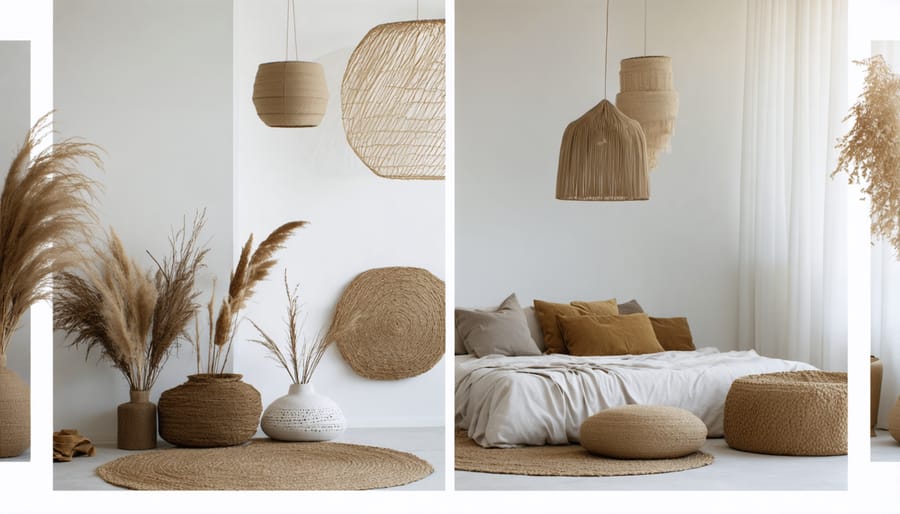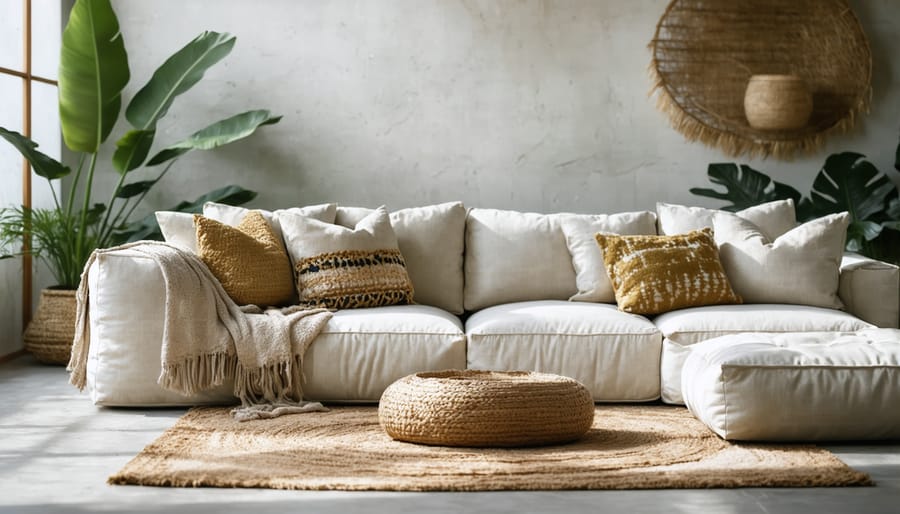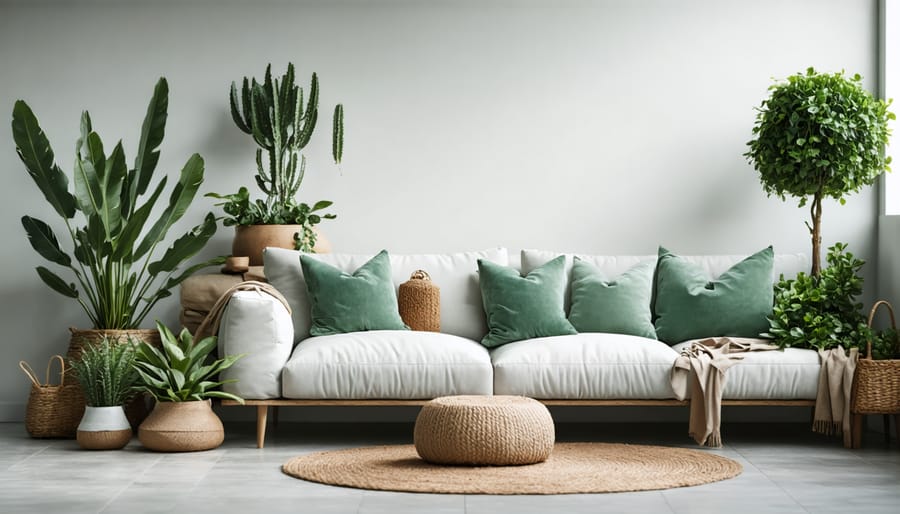Revolutionize your wardrobe and transform your living space with sustainable fashion designers who are redefining eco-conscious style. These innovative creators blend timeless aesthetics with environmental responsibility, crafting pieces that celebrate both beauty and planetary well-being. From upcycled textiles transformed into luxurious home accessories to zero-waste clothing collections that double as art installations, sustainable fashion designers are pioneering a new era of conscious consumption. Their groundbreaking approaches—incorporating organic materials, traditional craftsmanship, and innovative recycling techniques—prove that style and sustainability aren’t just compatible; they’re inseparable. As climate awareness grows, these visionary designers aren’t just creating products; they’re architecting a future where beautiful design and environmental stewardship coexist harmoniously, making it easier than ever for conscious consumers to make choices that benefit both their homes and the planet.
Fashion Meets Home: The Sustainable Design Revolution
Why Fashion Designers Are Perfect for Home Decor
Fashion designers bring a unique perspective to home decor that makes them naturally suited for creating beautiful living spaces. Their eye for color coordination, pattern mixing, and textile knowledge translates perfectly into interior design. Just as they understand how fabrics drape on the body, they know how materials work in home settings – from curtains to upholstery.
These creative professionals are trained to spot emerging trends while maintaining timeless appeal, a skill that’s invaluable when designing spaces that need to stay relevant for years. Their experience with sustainable materials and ethical production methods in fashion directly applies to creating eco-friendly home products, making them ideal partners in sustainable living.
Fashion designers also excel at creating cohesive collections that tell a story, which is exactly what a well-designed room should do. They understand scale, proportion, and balance – whether it’s on a runway or in your living room. Their ability to mix high-end pieces with affordable finds helps create spaces that are both stylish and accessible, just as they do in fashion collections.
The attention to detail that makes great fashion design translates seamlessly into thoughtful home decor choices, from carefully chosen throw pillows to perfectly placed decorative elements.
Sustainable Materials in Fashion-Inspired Decor
Sustainable fashion designers are revolutionizing home decor by introducing eco-conscious materials that are both beautiful and environmentally responsible. Natural fibers like organic cotton, hemp, and bamboo are being transformed into stunning textiles for cushions, throws, and wall hangings. These materials not only minimize environmental impact but also bring a rich, organic texture to living spaces.
Recycled materials have become increasingly sophisticated, with designers creating luxurious-looking pieces from reclaimed plastics, metals, and fabrics. Many are incorporating innovative materials like pineapple leather (Piñatex) and mushroom-based alternatives into decorative elements, proving that eco-friendly home products can be both stylish and sustainable.
Production methods are equally important, with designers embracing low-waste cutting techniques, natural dyes, and water-conserving processes. Solar-powered workshops and local manufacturing help reduce carbon footprints, while traditional craftmanship techniques ensure longevity and timeless appeal. These thoughtful approaches to production result in unique pieces that tell a story of sustainability while adding character to your home.

Leading Sustainable Fashion Designers in Home Decor
Stella McCartney Home
Stella McCartney’s venture into sustainable home accessories showcases her unwavering commitment to eco-friendly design. Her home collection seamlessly blends luxury with environmental responsibility, featuring organic cotton bedding, recycled glass vases, and ethically sourced wool throws that bring conscious living into everyday spaces.
The collection’s standout pieces include hemp curtains dyed with natural pigments and decorative pillows crafted from deadstock fabrics – materials that would otherwise go to waste. Each piece demonstrates how sustainability doesn’t mean compromising on style or comfort. The designer’s signature geometric patterns and nature-inspired motifs appear throughout the collection, creating a cohesive look that’s both modern and timeless.
What sets McCartney’s home line apart is its innovative use of bio-based materials. Her team has developed alternatives to traditional synthetic materials, including cushion fills made from mushroom leather and lampshades crafted from biodegradable corn-based polymers. These choices reflect a deeper understanding of circular design principles and showcase how luxury homes can embrace eco-friendly alternatives.
For those looking to incorporate sustainable pieces into their homes, McCartney’s collection offers versatile options that work in both contemporary and traditional settings. The neutral color palette, punctuated with bold botanical prints, makes it easy to mix and match pieces while maintaining a sophisticated aesthetic that’s quintessentially Stella McCartney.

Eileen Fisher Home
Eileen Fisher’s venture into sustainable home decor exemplifies the same minimalist philosophy that made her clothing line iconic. The collection features organic cotton bedding, ethically sourced wool throws, and handcrafted decorative pieces that bring together comfort and conscious living.
Each item in the home collection reflects Fisher’s commitment to sustainability, using natural fibers and low-impact dyes. The bedding collection, in particular, stands out with its cloud-like organic cotton sheets and duvet covers in a carefully curated palette of earth tones and soft neutrals. These pieces are designed to last, becoming softer with each wash while maintaining their structural integrity.
The line’s wool throws and pillows are sourced from responsible sheep farms that prioritize animal welfare and sustainable farming practices. These pieces showcase the natural beauty of undyed wool, celebrating the material’s inherent variations in texture and color.
What makes Fisher’s home collection truly special is its adaptability. Each piece is designed to work seamlessly with existing decor, following the principle of “fewer, better things.” The collection’s minimal aesthetic doesn’t compromise on comfort, proving that sustainable living can be both beautiful and practical.
Storage solutions and organizational pieces in the collection follow the same ethos, featuring recycled materials and clean lines that help create serene, clutter-free spaces. From woven baskets to organic cotton storage bins, each item serves a purpose while maintaining the collection’s commitment to environmental responsibility.
Alternative Designers Making Waves
The sustainable home decor landscape is witnessing an exciting transformation thanks to innovative designers who are reimagining how we approach interior fashion. These creative minds are proving that style and sustainability can go hand in hand, bringing fresh perspectives to eco-conscious home design.
Take Sarah Chen’s collection of upcycled textile wall hangings, for instance. Working from her Portland studio, Chen transforms discarded fabrics into stunning pieces that tell stories of sustainability while adding character to living spaces. Her signature technique of blending vintage kimono silks with locally sourced organic cotton has earned her recognition in the sustainable design community.
Another standout is Marcel Rodriguez, whose furniture line made from reclaimed shipping pallets and fallen urban trees has revolutionized eco-friendly furniture design. His pieces not only minimize waste but also celebrate the natural imperfections of salvaged materials, creating unique conversation pieces for modern homes.
The duo behind GreenHouse Collective, Emma Watson and Raj Patel, are making waves with their innovative approach to sustainable lighting. Their pendant lamps, crafted from biodegradable mushroom mycelium and agricultural waste, prove that cutting-edge design can be both beautiful and environmentally responsible.
In the textile realm, Nina Berglund’s collection of organic hemp and nettle fiber throws and cushions showcases traditional Scandinavian weaving techniques with a contemporary twist. Her zero-waste approach includes using natural dyes from food waste and local plants, creating pieces that are as kind to the planet as they are pleasing to the eye.
Rising star Diego Martinez is turning heads with his collection of biodegradable decorative objects made from coffee grounds and corn starch. His vases and sculptures not only look stunning but can be completely composted at the end of their life cycle, offering a truly circular solution to decorative home accessories.
These designers are just a few examples of the creative forces reshaping sustainable home decor. Their work demonstrates that choosing eco-friendly options doesn’t mean compromising on style or quality. By supporting these innovative designers, homeowners can create beautiful, conscious spaces that reflect both their personal style and their commitment to environmental stewardship.
Incorporating Fashion-Inspired Sustainable Pieces
Styling Tips from Fashion to Home
The principles that guide sustainable fashion can beautifully translate into home design, creating spaces that are both stylish and environmentally conscious. Start by applying the concept of timeless design – just as a well-crafted sustainable garment stands the test of time, choose furniture and decor pieces that won’t quickly go out of style. Think clean lines, neutral base colors, and classic silhouettes.
Consider implementing a capsule wardrobe approach to your home by selecting versatile pieces that work well together. This mindset can help you create efficient organization solutions while reducing clutter and overconsumption. Layer textures and materials just as you would with clothing – mix organic cotton throws with recycled glass vases or bamboo furniture with hemp textiles.
Color blocking, a favorite technique in fashion, works wonderfully in interior spaces. Create visual interest by pairing complementary sustainable materials in bold, solid colors. Don’t be afraid to experiment with statement pieces – like fashion’s accent accessories, incorporate eye-catching sustainable art or unique recycled furniture pieces to add personality to your space.
Remember the fashion rule of proportions when arranging furniture and decor. Balance larger pieces with smaller accessories, and create rhythm through repetition of sustainable elements. Just as you’d coordinate an outfit, ensure your room’s elements work in harmony while maintaining their individual appeal.
Lastly, embrace the slow fashion philosophy in your home by choosing quality over quantity. Invest in well-made, sustainable pieces that tell a story and will last for years to come, rather than following fleeting trends that contribute to environmental waste.

Investment Pieces Worth Your Money
When investing in sustainable fashion for your home, certain pieces offer exceptional value and longevity. A well-crafted sofa made from eco-friendly materials typically lasts 10-15 years with proper care, making it a smart investment despite the higher upfront cost. Look for frames made from sustainably sourced hardwood and organic upholstery fabrics.
Quality window treatments, particularly those made from natural fibers like hemp or organic cotton, can last decades while providing excellent insulation. These pieces not only reduce energy costs but also maintain their appearance with minimal maintenance.
Area rugs from sustainable designers often feature hand-knotted construction and natural dyes, which actually improve with age. While these pieces command premium prices, they can last generations when properly maintained.
When considering sustainable seating options, invest in multipurpose pieces like storage ottomans or convertible benches. These versatile items offer both functionality and style while reducing the need for additional furniture.
Statement lighting fixtures from eco-conscious designers, particularly those crafted from recycled materials or sustainable woods, tend to remain timeless and can easily become family heirlooms. Look for pieces with replaceable parts to ensure longevity.
For smaller investments, consider handwoven textiles like throws and pillowcases made from organic materials. These pieces can be rotated seasonally and typically maintain their quality for many years, especially when crafted by reputable sustainable designers.
Remember to factor in maintenance costs and care requirements when making these investment decisions. Quality sustainable pieces often come with care instructions that, when followed, significantly extend their lifespan.
The fusion of sustainable fashion and home decor has revolutionized how we approach interior design, with fashion designers leading the charge toward more environmentally conscious living spaces. These innovative creators have successfully translated their sustainable practices from the runway to our homes, introducing eco-friendly materials, ethical production methods, and timeless designs that reduce waste and environmental impact.
Their influence extends beyond just aesthetics, fostering a broader cultural shift toward mindful consumption in home goods. By emphasizing quality over quantity, these designers have shown that sustainable choices don’t mean compromising on style or comfort. Their work has inspired a new generation of homeowners to think differently about their decor choices, considering factors like material sourcing, production methods, and product lifecycle.
Looking ahead, we can expect sustainable fashion designers to continue pushing boundaries in home decor. Trends point toward increased use of recycled materials, innovative fabric technologies, and multi-functional pieces that adapt to changing needs. The growing collaboration between fashion and interior design sectors suggests we’ll see more crossover collections that prioritize both style and sustainability.
For homeowners looking to embrace this movement, the key is starting small and making intentional choices. Whether it’s selecting sustainably sourced textiles or choosing pieces from designers who prioritize environmental responsibility, every decision contributes to a more sustainable future for both fashion and home design.
